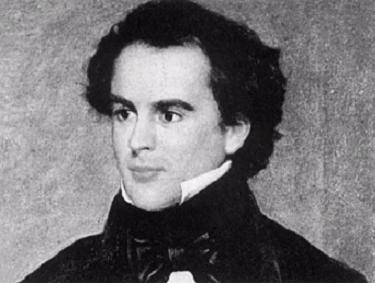A sample text widget
Etiam pulvinar consectetur dolor sed malesuada. Ut convallis
euismod dolor nec pretium. Nunc ut tristique massa.
Nam sodales mi vitae dolor ullamcorper et vulputate enim accumsan.
Morbi orci magna, tincidunt vitae molestie nec, molestie at mi. Nulla nulla lorem,
suscipit in posuere in, interdum non magna.
|
 Albee When you live in the puppy house you celebrate Halloween a little bit differently than everyone else on campus, especially when the president of your club surprises you with the dog from last year since we have yet to get a new puppy this year. So I had a great Halloween to say the least.
I spent my Halloween cuddled up with Albee on the living room floor, watching Scooby-Doo, working on a group project, and helping hand out Halloween Candy. Yes, I spent Halloween doing literally everything at once — the beauty of multitasking. It was fun and relaxing to spend the night cuddling, training, and loving on the most wonderful and obedient dog I have ever worked with in my life.
I love attending lectures on campus, and my favorites are always the ones sponsored by our English department. On Tuesday evening, I had the pleasure of attending the annual Holloway Lecture, where I got to listen to Princeton professor Bill Gleason give his talk, “Masterpiece Theater Revisited: Nathaniel Hawthorne and the Pulps.”
I have to admit that prior to attending this lecture, I wasn’t sure if I was going to like it. I read Hawthorne’s The Scarlet Letter in high school and I’ve read one or two of his short stories, but they didn’t particularly captivate me. Beyond this, I didn’t really know a lot about Nathaniel Hawthorne.
 Nathaniel Hawthorne However, I always go to lectures with an open mind, and Bill Gleason’s lecture has made me reconsider Hawthorne in a new light. I am now more interested in reading Hawthorne’s work than I had been before. (When I take the English department’s Edgar Allan Poe class next semester, I might try to write a paper about Poe and Hawthorne’s works.)
Gleason discussed how at Princeton, he and one of his first year seminar classes were looking through old dime novels and pulp magazines from the 1920s and 1930s when they noticed that an April 1938 issue of one of the magazines, Weird Tales, featured a republished Hawthorne story called “Feathertop.” This intrigued the group. Why was a magazine called Weird Tales publishing a story from the esteemed Nathaniel Hawthorne, and what did it say about the readers of the magazine and the stories themselves that “Feathertop” and several other Hawthorne stories appeared in Weird Tales?
Gleason argued that the literature we view as “classic” isn’t classic because of its timeless excellence. Instead, works become “classic” because people of certain eras pick them up and say that they’re excellent. In other words, literary canonization is dependent on the historical moment. What works are considered “classic” changes over time.
It only took Hawthorne about a decade before his work started to gain serious interest in literary circles, and it’s remained popular in such circles ever since. But early 20th century magazines aren’t “high culture”–they’re “low culture.” What was a high culture piece of work like Hawthorne’s story doing in a low culture publication? In “Feathertop,” a witch, Mother Rigby, brings a pumpkin-headed scarecrow to life. The scarecrow, named Feathertop, goes to town, and for a while, people think he is a delightful gentleman and are somehow unable to recognize that he has raggedy clothes and a pumpkin head. Gleason argued that “Feathertop” captivated readers because it is an allegory of the creative process and a satire of the process with which literary circles decide what works they like, in addition to being a social satire of “cultural elites.” These class-related satirical elements, combined with a somewhat spooky subject matter, were sure to delight most Weird Tales readers.
I would have never thought that Hawthorne stories would be spooky or that they might have appeal outside of literary circles in the same way that Poe’s tales have a lot of appeal. Now that I have some insightful new ways to think about Hawthorne’s works, I might someday explore them on my own. Gleason’s lecture, as well as many of the English and literature classes I have taken at McDaniel, has prepared me to do just that.
Image Source
Although I was not ready to leave Venice, I thought that Vienna was a very pretty and sophisticated city. The activities that the school planned in Vienna were my absolute favorite and I learned a lot more about the history and culture of Vienna.
The Schonbrunn Palace complemented with the audio guide was absolutely fantastic. Not only did the audio guide allow me to go at my own pace, but in each room, I learned at least three interesting pieces of information about Vienna or the royal family. Some of the highlights of the room visits for me included seeing the room where the young Mozart performed, visiting the room where Kennedy met with Khrushchev, hearing the tales about Marie Antoinette, and listening to the explanations of the different decorations in the rooms. The extra ten minutes that we were allotted for the tour made a grand difference and some of my favorite rooms were in this “extra” tour session.
After the tour, a few of us wanted to explore the gardens. It was fun to imagine members of the royal family walking around in the garden in the same spaces that we were walking- the gardens definitely have a sense of grandeur and splendor. We walked to the top of the hill and had a spectacular view of the palace. The day was pretty busy with the visits to the churches and palace; it was nice to reflect on what I had learned that day.
My other favorite activity was our visit to the Kunsthistorisches Museum. The audio guides were a huge help for me and the even the first descriptions about the architecture and history of the building proved to be fascinating. When I finally arrived at the art gallery, it was a bit overwhelming how many pieces of art were available for the audio guide commentary. I eventually had to learn to pick and choose which art pieces I wanted to learn more about. My favorite piece of information that I learned was about “Paragone.” Paragone is an artistic argument that occurred in the 16th century; painters attempted to show their dominance over sculptors (they believed sculptors were not in tune with nature, unlike painters).
I also enjoyed the Egypt collection contributed by Austrian archaeologists. The audio guides were also helpful during this section and each room was dedicated to a different section of ancient Egyptian history. My favorite audio guide sections were the explanations of the sphinx and the hippo in Egyptian culture. Hippos were actually seen as cruel creatures, while the sphinx had no negative connotations (this differs from the Greek ideas on the sphinx).
I am glad that I was able to spend more time at this museum because of the information available through the labels and the audio guide. Of course, I could have spent the whole day at the museum, but I am happy with the provided information and have added the Kunsthistorisches Museum to my list of “museums to visit again.”
I have to admit that although I was looking forward to the Venice trip, I did not believe that I would enjoy the city due to the plethora of tourists. While there were many tourists in Venice, this did not prevent me from falling in love with the city. It did not matter which direction I turned- the beautiful views were unceasing and I now understand why Venice is one of the most photographed cities in the world. Each moment in Venice really was perfect (the weather, the activities, the meals, etc.). In particular, there are two activities that stand out to me when I think about this trip- the Peggy Guggenheim Museum Collection and a (accidental) two hour water taxi ride I was able to take with a few friends.
I have never particularly appreciated modern art. I admittedly accepted the negative stereotypes of modern art- “I could paint/construct what these ‘artists’ paint.” However, I while at the Guggenheim Museum, I was fascinated by the paintings and wish that I could have spent more time learning from the pieces. I think that one of the reasons why this museum changed my mind about modern art was the description next to each painting. The descriptions were all extremely intelligent and displayed unique insight into various subjects. For example, one painting had the description explaining that the blurred colors and smears showed the artist’s idea that WWII and the Holocaust cannot be represented (one of the topics in my Holocaust and Memory class at McDaniel). It was also a special experience to see paintings by famous painters such as Picasso and Andy Warhol.
During our free night in Venice, a couple of friends and I decided to explore and take advantage of our 24 hour water taxi passes. We originally thought that the ride might last half an hour around the island. We were on the boat for over two hours (we even got off before the boat made the roundtrip). While the first half of the boat ride was a little crowded with locals and tourists alike, the second half was much less claustrophobic. We were able to stand outside and watch the scenery and see different parts of the island. We were able to drive past/around Murano, where our glass souvenirs were created.
Visiting the art museums did allow me to learn more about Italian art and lifestyle. I even found a (free!) museum dedicated to Vivaldi and string instruments. The variety of instruments and their history accompanied details about Vivaldi’s life and it was a wonderful experience to learn about Vivaldi while in Venice. As I mentioned before, each moment was perfect while in Venice and it is always a memorable experience when I can learn about history while seeing the actual sites and locations where the history took place.
 Hey guys! Hey guys!
A few days ago, I checked my mail and received my Vote by Mail ballot, to my great excitement. The only reason I was excited to turn 18 was to finally be able to vote. Even though I’m many miles away from the great city of San Francisco, my permanent residence is still technically in the city, which means I’m allowed to vote!
Not having been in the city and not having been paying much attention to the current issues, I was a little ashamed to realize I barely even knew what was on the ballot. Thankfully, they had also sent me a voter information guide, which is also published online before every election. I spent a good couple of hours reading through the measures on the ballots and the arguments in favour and in opposition of the proposed measures. I found it fascinating, especially having worked with my own legislation through Maryland Student Legislature.
While I can’t visit the city as frequently as I’d like to, I can still speak my voice in the greatest city!
Ema

|
|



